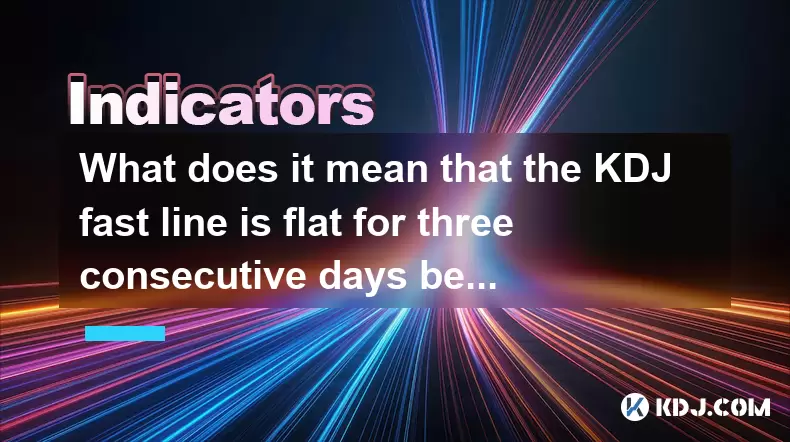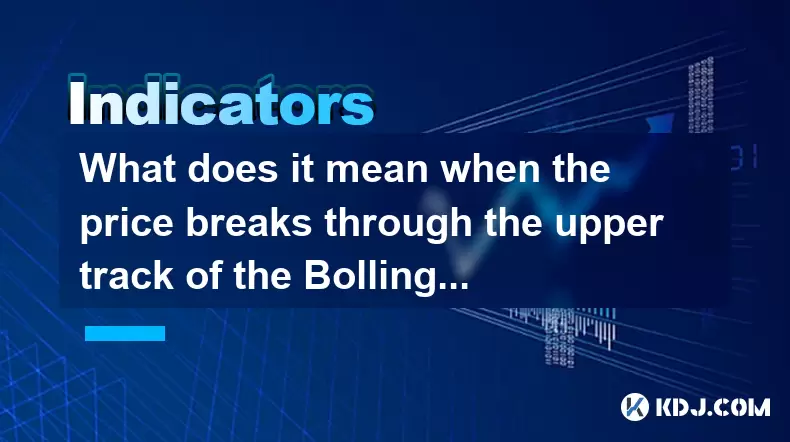-
 Bitcoin
Bitcoin $117500
-0.66% -
 Ethereum
Ethereum $3760
-1.24% -
 XRP
XRP $3.087
-2.54% -
 Tether USDt
Tether USDt $0.9999
-0.01% -
 BNB
BNB $803.6
-4.03% -
 Solana
Solana $180.3
-4.15% -
 USDC
USDC $0.9998
-0.01% -
 Dogecoin
Dogecoin $0.2218
-4.92% -
 TRON
TRON $0.3366
3.71% -
 Cardano
Cardano $0.7785
-3.73% -
 Hyperliquid
Hyperliquid $42.90
-4.75% -
 Sui
Sui $3.797
-7.45% -
 Stellar
Stellar $0.4165
-2.32% -
 Chainlink
Chainlink $17.65
-4.17% -
 Bitcoin Cash
Bitcoin Cash $561.0
-3.86% -
 Hedera
Hedera $0.2611
-4.54% -
 Avalanche
Avalanche $24.33
-7.02% -
 UNUS SED LEO
UNUS SED LEO $8.972
0.06% -
 Litecoin
Litecoin $107.6
-2.79% -
 Toncoin
Toncoin $3.254
-1.84% -
 Shiba Inu
Shiba Inu $0.00001306
-4.69% -
 Ethena USDe
Ethena USDe $1.001
0.00% -
 Uniswap
Uniswap $10.10
-4.83% -
 Polkadot
Polkadot $3.902
-4.63% -
 Monero
Monero $315.1
-2.57% -
 Dai
Dai $1.000
0.02% -
 Bitget Token
Bitget Token $4.499
-2.53% -
 Pepe
Pepe $0.00001145
-7.38% -
 Cronos
Cronos $0.1479
6.07% -
 Aave
Aave $281.3
-4.07%
What does it mean that the KDJ fast line is flat for three consecutive days before the key support level?
A flat KDJ fast line for three days near key support signals consolidation, often preceding a breakout—watch for volume and confirmation candles to time entries.
Jul 29, 2025 at 11:01 am

Understanding the KDJ Indicator in Cryptocurrency Trading
The KDJ indicator is a momentum oscillator widely used in technical analysis within the cryptocurrency market. It consists of three lines: the %K (fast line), %D (slow line), and %J (divergence line). The %K line reflects the current price relative to the high-low range over a specific period, typically 9 days. The %D line is a moving average of %K, while the %J line represents the divergence between %K and %D. Traders use this tool to identify overbought or oversold conditions, potential reversals, and trend strength.
When analyzing price movements in volatile assets like Bitcoin or Ethereum, the KDJ provides signals based on crossovers and divergence. A flat KDJ fast line indicates that the %K value has stabilized, showing little change over consecutive periods. This stagnation often suggests weakening momentum and can precede a directional breakout, especially when occurring near significant support or resistance levels.
Significance of a Flat Fast Line Over Three Days
A KDJ fast line that remains flat for three consecutive days signals a period of consolidation or indecision in the market. During this time, buyers and sellers are in equilibrium, and price action lacks strong directional momentum. In the context of cryptocurrency, where volatility is high, such a pattern may reflect accumulation or distribution by large market participants.
Each day the fast line remains flat, the market is testing its current level without a decisive push. This behavior can be observed on 4-hour or daily timeframes, depending on the trader’s strategy. The flatness implies that the %K values are nearly identical across the three days, meaning the closing price is consistently near the middle of the recent high-low range. This lack of momentum may foreshadow a breakout once the balance is disrupted.
Proximity to a Key Support Level
When this flat KDJ fast line occurs near a key support level, the technical significance increases. Support levels in cryptocurrency are price zones where historical buying pressure has prevented further declines. These levels are often derived from previous swing lows, Fibonacci retracements, or volume profiles.
The convergence of a flat KDJ fast line and a key support level suggests that the market is pausing at a critical juncture. If the support holds, the flat KDJ may precede a bullish reversal. Traders watch for confirmation such as a rising %K line crossing above %D, or a breakout above recent consolidation highs. Conversely, if the support breaks, the flat KDJ could indicate a failed bounce, leading to further downside.
Step-by-Step Interpretation and Confirmation
To properly interpret this signal, traders should follow these steps:
- Identify the key support level using historical price data. Look for at least two prior touches where price reversed upward.
- Check the KDJ settings on your charting platform. Ensure it is set to the standard 9,3,3 configuration (9-period %K, 3-period %D, and 3-period smoothing).
- Observe the %K line over the last three trading sessions. Confirm that its value has changed minimally—less than 1–2 points deviation.
- Monitor volume trends during the flat period. Declining volume supports consolidation; rising volume on the third day may signal an imminent move.
- Wait for a trigger candle—a strong bullish or bearish candle—that breaks the consolidation range with increased volume.
- Confirm with additional indicators such as RSI stabilizing above 30 (bullish) or MACD histogram turning positive.
This process helps filter false signals and increases the probability of a valid trade setup.
Trading Strategies Based on This Signal
Traders can use this pattern to plan entries and risk management. For a potential long position:
- Place a buy limit order slightly above the consolidation high formed during the three flat days.
- Set a stop-loss just below the key support level to limit downside risk.
- Use a take-profit target based on the next resistance level or a 1:2 risk-reward ratio.
For a short setup, if the support breaks:
- Enter on a close below support with a bearish candle.
- Place a stop-loss above the recent swing high or the consolidation range.
- Aim for the next lower support zone as a profit target.
It is essential to align this strategy with the broader trend. In an uptrend, flat KDJ near support is more likely to result in a bounce. In a downtrend, it may be a temporary pause before continuation.
Common Misinterpretations and Pitfalls
One common mistake is assuming that a flat KDJ fast line alone is a reversal signal. Without confirmation from price action or volume, it may simply indicate a pause before continuation. Another error is ignoring the broader market context—such as Bitcoin dominance or macroeconomic news—that can override technical patterns.
Additionally, using incorrect KDJ settings can distort the signal. Some platforms default to non-standard parameters, leading to misleading flatness. Always verify the input values. Also, in low-liquidity altcoins, price manipulation can create artificial consolidation patterns, making the KDJ less reliable.
Frequently Asked Questions
What timeframes are best for observing a three-day flat KDJ fast line?
The daily chart is most reliable for identifying a three-day flat KDJ fast line near support. However, 4-hour charts can also be used for shorter-term trades, provided the support level is significant and the flatness spans three full 4-hour periods.
Can a flat KDJ fast line occur at resistance with similar implications?
Yes. A flat KDJ fast line at a key resistance level indicates stalled upward momentum. It may precede a pullback or breakout, depending on subsequent price action. The interpretation mirrors that at support, but in the opposite direction.
How do I distinguish between a flat KDJ due to consolidation versus a weakening trend?
Examine volume and price structure. Consolidation shows tight price ranges and declining volume. A weakening trend often has lower highs and rising volume on down moves. Also, check if the %D line is sloping downward, which suggests bearish momentum despite the flat %K.
Does the KDJ work well in sideways cryptocurrency markets?
Yes. The KDJ excels in ranging markets by highlighting overbought and oversold conditions. A flat fast line in such environments often marks the midpoint of the range, offering clues for mean-reversion strategies.
Disclaimer:info@kdj.com
The information provided is not trading advice. kdj.com does not assume any responsibility for any investments made based on the information provided in this article. Cryptocurrencies are highly volatile and it is highly recommended that you invest with caution after thorough research!
If you believe that the content used on this website infringes your copyright, please contact us immediately (info@kdj.com) and we will delete it promptly.
- Bitcoin Price Drop: Navigating the Dip with Corporate Strategies
- 2025-07-30 07:30:12
- BNB's Bullish Cycle: ChatGPT Weighs In on the Future
- 2025-07-30 06:50:12
- Arbitrum (ARB) Price Prediction: Navigating the Ups and Downs of the Best ETH Eco
- 2025-07-30 06:50:12
- Ethereum, Ruvi AI, Presale: The Next Big Thing in Crypto?
- 2025-07-30 07:30:12
- Ruvi AI: The Avalanche Challenger with CMC Listing Aiming for $1, Leaving Competitors Like Avalanche in the Dust?
- 2025-07-30 07:10:13
- Crypto ETPs, In-Kind Redemptions, and the SEC Vote: A New Era?
- 2025-07-30 07:15:28
Related knowledge

What does it mean when the EMA combination crosses upward for the first time after sideways trading?
Jul 28,2025 at 03:43pm
Understanding the EMA and Its Role in Technical AnalysisThe Exponential Moving Average (EMA) is a widely used technical indicator in cryptocurrency tr...

What does it mean when the price breaks through the upper track of the Bollinger Band but the RSI is overbought?
Jul 30,2025 at 03:35am
Understanding Bollinger Bands and Their Upper TrackBollinger Bands are a widely used technical analysis tool developed by John Bollinger. They consist...

What signal does the ROC send when it rises rapidly from a low level and breaks through the zero axis?
Jul 27,2025 at 10:15am
Understanding the Rate of Change (ROC) IndicatorThe Rate of Change (ROC) is a momentum-based oscillator used in technical analysis to measure the perc...

What does it mean when the moving averages are glued together and a gap appears?
Jul 29,2025 at 07:49pm
Understanding Moving Averages in Cryptocurrency TradingMoving averages are among the most widely used technical indicators in the cryptocurrency tradi...

What does it mean when TEMA breaks through the long-term downward trend line?
Jul 29,2025 at 02:50pm
Understanding the Role of Smart Contracts in Decentralized Finance (DeFi)Smart contracts are self-executing agreements with the terms of the agreement...

What does it mean when the price breaks through the double bottom neckline and the moving averages are arranged in a bullish pattern?
Jul 28,2025 at 10:57am
Understanding the Double Bottom PatternThe double bottom is a widely recognized reversal chart pattern in technical analysis, particularly within the ...

What does it mean when the EMA combination crosses upward for the first time after sideways trading?
Jul 28,2025 at 03:43pm
Understanding the EMA and Its Role in Technical AnalysisThe Exponential Moving Average (EMA) is a widely used technical indicator in cryptocurrency tr...

What does it mean when the price breaks through the upper track of the Bollinger Band but the RSI is overbought?
Jul 30,2025 at 03:35am
Understanding Bollinger Bands and Their Upper TrackBollinger Bands are a widely used technical analysis tool developed by John Bollinger. They consist...

What signal does the ROC send when it rises rapidly from a low level and breaks through the zero axis?
Jul 27,2025 at 10:15am
Understanding the Rate of Change (ROC) IndicatorThe Rate of Change (ROC) is a momentum-based oscillator used in technical analysis to measure the perc...

What does it mean when the moving averages are glued together and a gap appears?
Jul 29,2025 at 07:49pm
Understanding Moving Averages in Cryptocurrency TradingMoving averages are among the most widely used technical indicators in the cryptocurrency tradi...

What does it mean when TEMA breaks through the long-term downward trend line?
Jul 29,2025 at 02:50pm
Understanding the Role of Smart Contracts in Decentralized Finance (DeFi)Smart contracts are self-executing agreements with the terms of the agreement...

What does it mean when the price breaks through the double bottom neckline and the moving averages are arranged in a bullish pattern?
Jul 28,2025 at 10:57am
Understanding the Double Bottom PatternThe double bottom is a widely recognized reversal chart pattern in technical analysis, particularly within the ...
See all articles

























































































